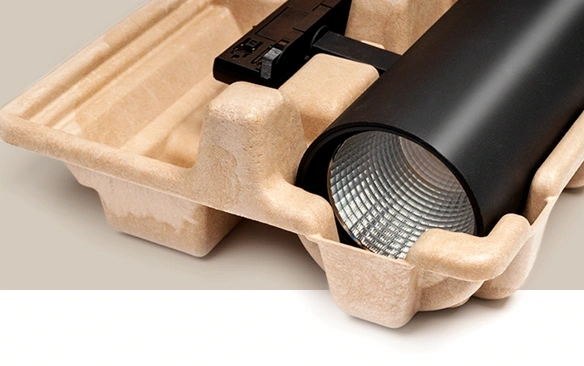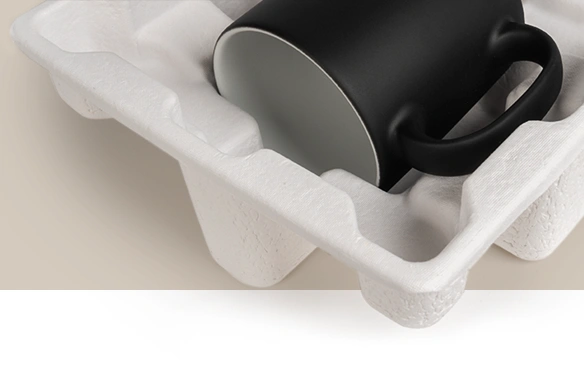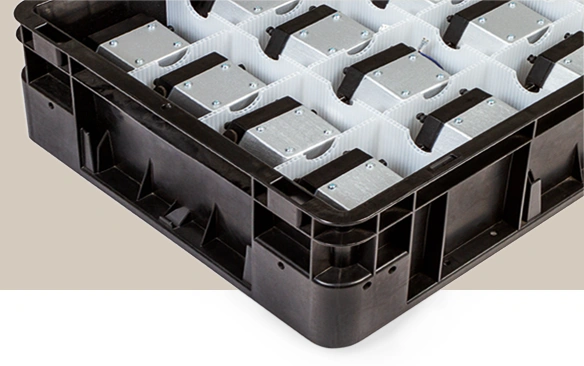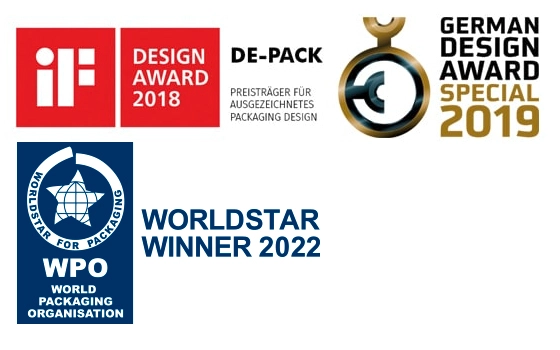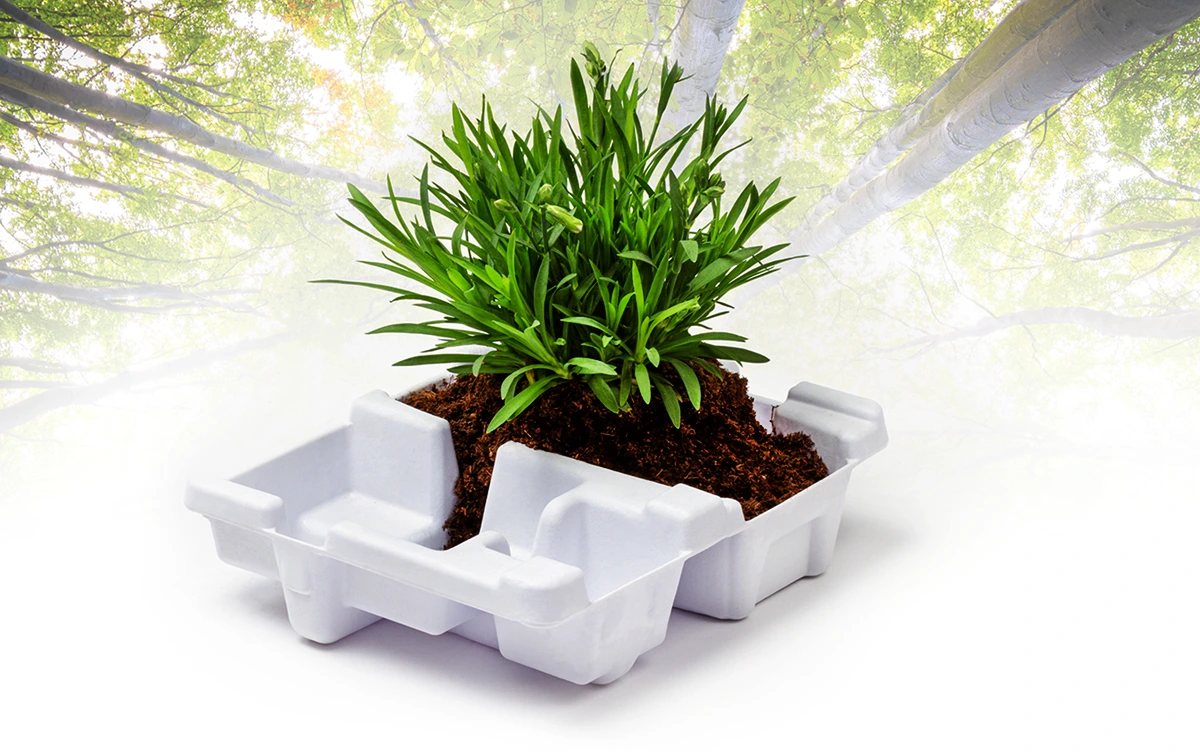Innovative packaging by DE-PACK
Innovative packaging and customer specific developments
DE-PACK offers an extensive range of standard and individual packaging solutions to a whole range of industries. Convince yourself of our services and take advantage of DE-PACK's competence and experience.
The packaging. The Solution.
For over 40 years, we have been supplying packaging to small and large customers in German-speaking countries and also internationally. Our packaging solutions are always precisely tailored to the requirements of the respective packaged goods and our customers.
Packaging solutions are an important part of our everyday lives. They protect products, simplify handling and contribute to content description and advertising. Packaging in retail is the outer wrapping of goods for protection until they are consumed or used.
Nature serves as a model for packaging, such as the fruit peel. The German Packaging Act (VerpackG) from January 2019 focuses on the product responsibility of producers and retailers and aims to avoid or reduce the impact of packaging waste on the environment. Recycling rates for packaging were further increased in January 2022, for example 90% for glass, ferrous metals, paper and cardboard.
Prepackages are filled and sealed as packages of any type in the absence of the buyer, and the quantity of the contents cannot be changed without opening. Open packages are also filled in the absence of the buyer.
Packaging is an important factor that must be taken into account in the production chain as well as in retail, especially with regard to recycling and environmental aspects.
Packaging Legislation
Packaging law is an important area of environmental protection because packaging plays a major role in our daily lives. However, internationally there are different rules and regulations.
In Switzerland, there is no general packaging regulation. Instead, there are specific regulations that affect certain types of packaging or their characteristics. These regulations can be found in various sections of the Environmental Protection Act, in particular in Art. 30 to Art. 30e, Art. 32 and Art. 32a ff.
In Austria, on the other hand, the regulation on the avoidance of packaging waste has been active since October 1, 1993 (VerpackVO). This regulation applies to all packaging and packaging waste placed on the market in Austria, regardless of whether it occurs in private households or in the commercial sector.
It is important to note that packaging laws can vary internationally and it is important to know the applicable regulations in each country.
Types of packaging by purpose of use
Packaging is an essential part of our everyday lives. They not only serve to protect the goods, but can also visually enhance and advertise. There are different types of packaging, such as bulk packaging, gift packaging, refill packaging, retail packaging, transport packaging and outer packaging.
Each of these types of packaging has its specific characteristics and features. Bulk packaging, for example, is a type of packaging that is delivered to wholesalers without separate outer packaging, while gift packaging contains additional decorations and expresses the appreciation of the giver to the recipient.
Refill packages and retail packaging also have their specific properties and purposes. Transport packaging is exclusively intended for the transportation of the goods and outer packaging enables new, consumer-friendly packaging for sale.
Finally, retail packaging extends the shelf life of the goods and serves to protect them during transport. We offer a wide range of packaging to meet your needs.
Packaging is essential for the safe delivery, handling, presentation and protection of goods of all kinds. Depending on the condition of the packaged goods, there are individual packaging materials such as bags, blisters, bottles, cans, sacks, boxes, protective films, spray cans, tubes, bags and vacuum packaging. Many industries also use loan packaging, which can be returned via the deposit system after use. Our packaging ensures that your goods are transported securely, as well as attractively presented. Discover our wide range of packaging solutions which are perfectly adapted to the needs of your goods.
Types of packaging by frequency of use
Reusable packaging is intended to be used several times for the same purpose. They are promoted by sufficient logistics and services, such as deposit systems. A classic example of reusable packaging is a butter dish.
Disposable packaging, on the other hand, is not intended for reuse. A good example of this is food packaging. Manufacturers of disposable bottles filled with beverages must charge a deposit of at least €0.25, which must be passed on by each additional distributor until the bottle is handed over to the end consumer.
We should make a conscious decision in favor of using reusable packaging to reduce our ecological footprint and conserve resources.
Purposes of packaging
Packaging is essential for protecting goods from environmental impact, damage, contamination and loss. They also ensure safe handling of materials and protect means of transport as well as the environment and other goods from damage.
An important purpose of packaging is the preservation of food, which can be achieved by vacuum sealed packaging. The design of closures, seals and prepackages, can also provide greater protection against manipulation and theft.
Gift packaging serves the purpose of preserving the surprise during unwrapping. Packaging also fulfills important functions during use and sale to the end consumer, such as dosage and removal, cleaning and communication of product information, identification and differentiation from competing products, and transmission of data and further information.
At a time when sustainability is playing an increasingly important role, packaging can also help convey the identity and personality of the product and brand, as well as adding additional value.
The purpose of packaging in logistics
Packaging and logistics belong together, as the right packaging helps to store and transport products more easily, safely and quickly. Suitable packaging protects the goods from excessive mechanical stress during transport and enables optimal utilization of the means of transport through standardization.
In logistics, it is important that the packaging is comfortable to handle, stackable on pallets and easy to display in stores to increase convenience for the consumer.
Packaging is made from different materials, such as glass, sheet metal, plastic and cardboard. There are two different processes for the production of plastic packaging, while cardboard packaging is produced by the die cutting process.
Packaging components
Packaging components are an important part of packaging technology. There are two major components: Packaging material and packaging aids.
Packaging material is the main component of the packaging and serves to enclose the packaged goods.
Packaging aids, on the other hand, are primarily used to seal or pad the packaging. An example is the packaging of a bottle which consists of the bottle body and the cork or cap as a sealing. The body in this case is the packaging matierial and the lid is the packaging aid.
Instruction manual and technical data for the safe and proper handling of a product are also part of the packaging. Ingredients of the packaged goods can also be indicated on the packaging itself or an attached label.
Packaging Substances
Packaging Substances are the materials used for the production of different packaging solutions. They can be made of paper, plastic, wood, metal (such as aluminum) or glass.
In the packaging industry, there are currently attempts to develop absolutely dense and chlorine free packaging made out of graphene for food and medication. This method allows the production of packaging without the use of harmful polymers containing chlorine.
In addition, the flavor of food is preserved when it is packaged in graphene.
Environmental aspects of packaging solutions
Packaging plays an important role in our daily lives. Unfortunately, it can also be a burden for the environment. To understand the impact of packaging on our environment, we need to consider the relationship between its functions and effects on the shelf life of products.
There are different types of solutions, such as disposable and reusable packaging. Each type has its own advantages and disadvantages in relation to the environment. Disposable packaging from private households that is marked with the "Grüne Punkt" is either recycled or incinerated due to the "Duale System Deutschland". Reusable packaging, on the other hand, participates in a loan-and-return trade.
Another alternative is compostable packaging, which is made from biodegradable materials and consists of renewable resources such as starch, cellulose, plant proteins or polylactic acid. This packaging is well suited for food and in many cases just as functional as conventional packaging solutions.
It is important to support recycling and waste prevention to minimize the environmental impact of packaging. One way to achieve this is by choosing sustainable solutions, such as reusable packaging, compostable packaging and packaging made from renewable resources.
The packaging industry
The packaging industry is highly fragmented, consisting of various subsectors such as paper, cardboard, plastic, metal and wood. In Germany, the packaging industry increased its sales by around 40% between 1996 and 2009, even though the number of employees fell during this period.
The paper industry contributes about 46% of the total sales of the German packaging industry and is also a large industry worldwide with a turnover of $354.2 billion in 2012. One of the largest industrial applications of packaging is food packaging, which is worth $1.6 trillion. Paper and foil manufacturers are organized in associations such as the Industrieverband Papier- und Folienverpackung e.V.
The economic aspects of packaging
In the packaging industry, economic aspects play an important role. Packaging makes a significant contribution to consumers' purchasing decisions. The packaging provides various benefits for the consumer. They protect the goods and increase their shelf life, save energy costs and allow saving time.
In the packaging industry, it is important to differentiate between gross and net weight. In this case, packaging efficiency is important. The lower the proportion of packaging to the total weight of the goods, the better the packaging efficiency.
An important issue in the packaging industry is the environmental impact of packaging waste. In 2019, 71.9% of packaging waste was recycled. 96.9% thereof could be recycled for materials or energy. Environmental laws such as the Packaging Act require a higher proportion of reuse and recycling of packaging. Since January 2022, according to the Packaging Act, different materials must be reused or recycled in the following proportions: Glass 90%, paper, cardboard 90%, metal 90%, aluminum 90% and plastic 90%.
